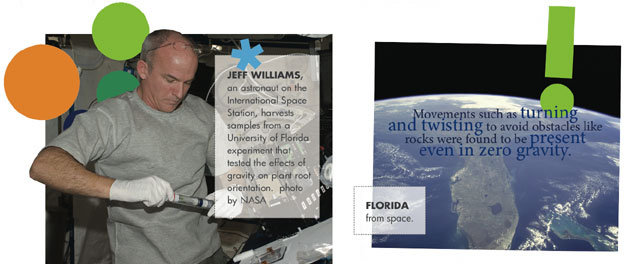One of the amazing aspects of the modern technology we’ve known over the past few decades has been our ability to implement space travel. When challenged by President John F. Kennedy, the scientists and researchers at NASA used the technology of their time to launch a man to the moon and return him safely home. Thankfully, that was not our one and only trip into the stars. Our brightest minds continue, despite a reduction in available funds, to look to the future and keep reaching for the unknown.
One of the most interesting recent discoveries comes courtesy of researchers at the University of Florida’s Institute of Food and Agricultural Sciences. Professors Anna-Lisa Paul and Rob Ferl have made a direct link between space travel and agriculture. Their study has unlocked some very important possibilities for the future of mankind and our ability to live for an extended period in space. Their experiment sent two varieties of plants related to mustard, the Wassilweskija and Columbia, aboard the International Space Station. The results they found led them to the amazing conclusion that, despite previous thoughts, the growth of a plant does not depend on gravity.
This discovery opens a world of possibilities when it comes to growing food and sustaining life on a long-term basis without the need to constantly re-supply from Earth. Amazingly, when the patterns of the root growth were examined closely, it was viewed that they displayed many of the normal behaviors that are seen when grown on our planet. Movements such as turning and twisting to avoid obstacles like rocks were found to be present even in zero gravity. Using an identical sample on Earth being grown under the same controlled conditions, the roots of each experiment were examined. It was discovered that the roots of the plants grown in space and on Earth both behaved in a similar fashion. It was feared that without the presence of gravity the roots would not have the ability to grow away from the seed. The absence of gravity was found to have little or no influence on the roots and their ability to grow outwardly.
“The space flight environment is absolutely outside the evolutionary experience of any organism on the face of the planet,” Paul elaborates. “It was very intriguing for to us to realize there is an evolutionary adaptation for roots to grow away from the seed to find the nutrients and water the plant needs to survive in the absence of gravity.”
It is truly amazing how far the technology of space exploration and discovery has advanced over the last fifty years. As a nation, the spirit of discovery has gotten us this far. If we will only let it, we will continue on our journey to a future held back only by our imagination. The future of space exploration is but a tiny seed that, as we now know, will grow anywhere.
CREDIT
article by RYAN WALLS

